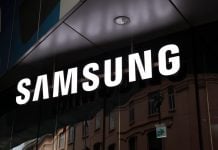Chinese display manufacturer BOE is in the process of ramping up its production to meet the demand for flexible smartphone OLED panels by Apple.
This will be done by converting three of its existing factories, namely B7, B11, and B12 into OLED suppliers for Apple, analyst firm UBI Research has claimed (via The Elec). Because of this, BOE will likely overtake LG display by 2023 to bag the second spot in the list of companies supplying OLED panels for iPhones.
BOE’s flexible OLED panel production capacity will be hitting 144,000 substrates per month by the fourth quarter of next year, up from the present capacity of 96,000. This is level with Samsung Display’s current capacity of 140,000 substrates per month.
As for LG Display, its capacity stands at 30,000 substrates per month but the company plans on expanding it to 45,000 substrates per month for flexible OLED panels and 15,000 for rigid OLED panels.
BOE was also converting B7, B11 and B12 from their current low-temperature polycrystalline silicon (LTPS) thin-film transistors (TFT) setup to low-temperature polycrystalline oxide (LTPO) TFT.
The display manufacturer currently relies on B7 and B11 factories to manufacture OLED for Apple, both of which are located in Sichuan province in China. B7 handled the front-end process while B11 the back-end for the iPhone 12. And for the iPhone 13, B11 is handling both the front and back-end processes.
BOE will be able to supply 15 million units of OLED panels to Apple for iPhone 12 and 3 million units for iPhone 13 this year, Choong Hoon Yi, CEO of UBI Research has said. All in all, it will account for 10% of the total OLED panels used by Apple on the iPhone this year.
For 2022, Apple is expected to ship 240 million units of the iPhone. Samsung will accordingly aim for 150 million units, LG Display for 70 million, and BOE for 50 million units. BOE will thus be able to overtake LG only by 2023.
RELATED:
- BOE says it has shipped about 40 million flexible AMOLEDs between Q1 & Q3 2021
- Samsung Galaxy Tab A8 2021 appears on WiFi Alliance ahead of launch
- Apple Car to reportedly launch as a fully autonomous electric vehicle by 2025
- Apple to open its first retail stores in India soon, begins hiring for them
- Qualcomm expects to supply only 20% of 2023 iPhone modems as Apple gears up to launch its own chips







